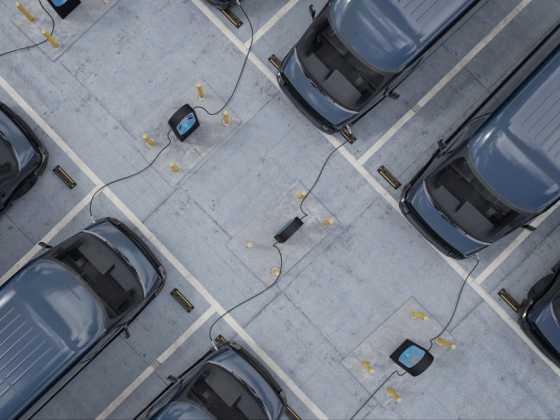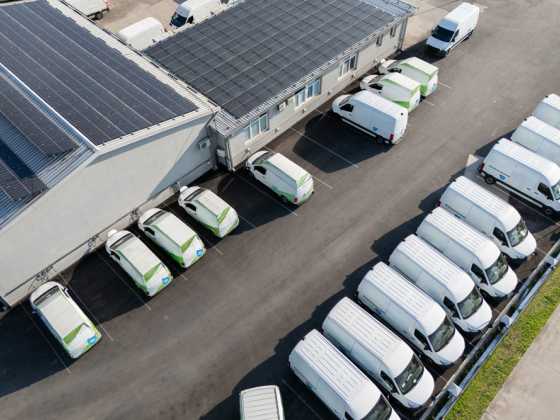Implementing EVs into your fleet: how to get it right

Seasoned electric vehicle integration manager Nigel Morris, shares some food for thought when considering implementing electric vehicles into a fleet
1. Why go green?
Sustainability, decarbonisation and the environment are headline issues. All of us with the opportunity to do so have a responsibility to review, reflect and do better. In the fleet world change is here and now; our dependency on importing and burning fossil fuels with associated emissions is under heavy scrutiny. Change costs but no change will cost us more. Get it right and we can create new opportunities and benefits and secure a healthier future for the industry and those effected by it.
2. Team up
Find or become an EV Champion; this is an opportunity to make a difference, boost a new career or breath new enthusiasm into an existing one. Then find your stakeholders; this is not just transport anymore, this is energy managers, carbon managers, E&FM, policy makers, sustainability and marketing.
There will be issues along the way so find your sponsor – the person with influence in your organisation that gets it, will have your back and unblock the inevitable.
This step has inter-dependencies and will evolve so keep the right people near you at the right time. Work to get the decision makers and the end users on board.
3. Phases
No one size fits all but there are commonalities. Not many fleets will shift wholesale overnight other than sole traders and even then, there will be a few phases before adoption.
Do some research on vehicle types, battery sizes, charging speeds, charger types, apps and maps and learn the lingo of kWh, kW and miles/kW. Gen up on Clean Air Zones and Congestion Charges in your operational area, taking into consideration the costs and potential savings.
Talk to dealers, manufacturers and fleet providers and get extended demonstrators in. Promote a few EV try out sessions. Get bums on seats and target your allies from step two. Get your CEO in a white van, get your van drivers in a good electric car. Enable first hand experience. Might be wise to look at EV charge cards, fobs or apps at this stage too and if your drivers take vehicles home, look at the OLEV funding deals so you can answer questions on cost.
4. Plan
Confirm resources and strategic buy in. Talk to fleet providers or specialists on evaluation tools and gather data to determine best EV fit to your business. Look at daily mileages, look for regular duty cycles, look for easy EV deployment. You want this to work so don’t set it up to fail.
Average daily mileage is less than most drivers think and telemetry data can back that up. Think about charging infrastructure; will it be depot style back to base? In which case plan a scalable solution, work with your E&FM and energy buddies from step two to look for best location.
Talk to commercial charge point operators for a managed solution or buy outright and operate. Again, look for the OLEV workplace charging available.
Local grid capacity – do you have sufficient? Can you consider embedding solar PV generation and building battery to assist the local grid and reduce costs over time or to avoid costly grid upgrade?
A small roll out may suit some firms; one charger, one vehicle and rotate amongst your operational groups for evaluation. Go large and put a bigger project into motion. Educate and train your drivers. Change driving style to a safer, more economic technique.
Explain benefits of using heated seats and steering wheel instead of cabin heaters, explain regenerative braking. Hammer home the benefits and keep the emissions, air quality and renewable energy strand live and kicking along with running cost savings.
Communicate internally, promote externally, leverage value, logo your zero emission investment, play social media and look for local events to attend and exhibit – this can be free advertising to a new market opportunity.
5. Monitor and feedback
Encourage and listen to user feedback, work together to reward and resolve issues, encourage and coach behavioural change. Develop and review policy. Some may need this before action but either way, policy can anchor decisions. Etch a fuel policy in decision makers minds but be mindful of user requirements and duty of vehicles. Remember – set up to succeed.
Evidence success, gather data, report, case study. You can do this of your competitors if this would help support your case.
Publicise your achievements, keep the internal and external comms going and look for next steps.
6. Acceptance
Are your drivers now requesting EV? Are other departments or sections within your organisation coming to you for advice or trial vehicles? Are the numbers adding up or projecting well? Can you see your leasing or ownership model changing? Is the issue now availability of EVs and not finance, procurement or desirability? Hopefully so; whether a one vehicle trial or a 150 vehicle fleet change, if scoped and phased, you have user acceptance, data to evidence and achieved EV integration.
Nigel Morris is EV Integration Manager at Swansea University's Active Build Centre






